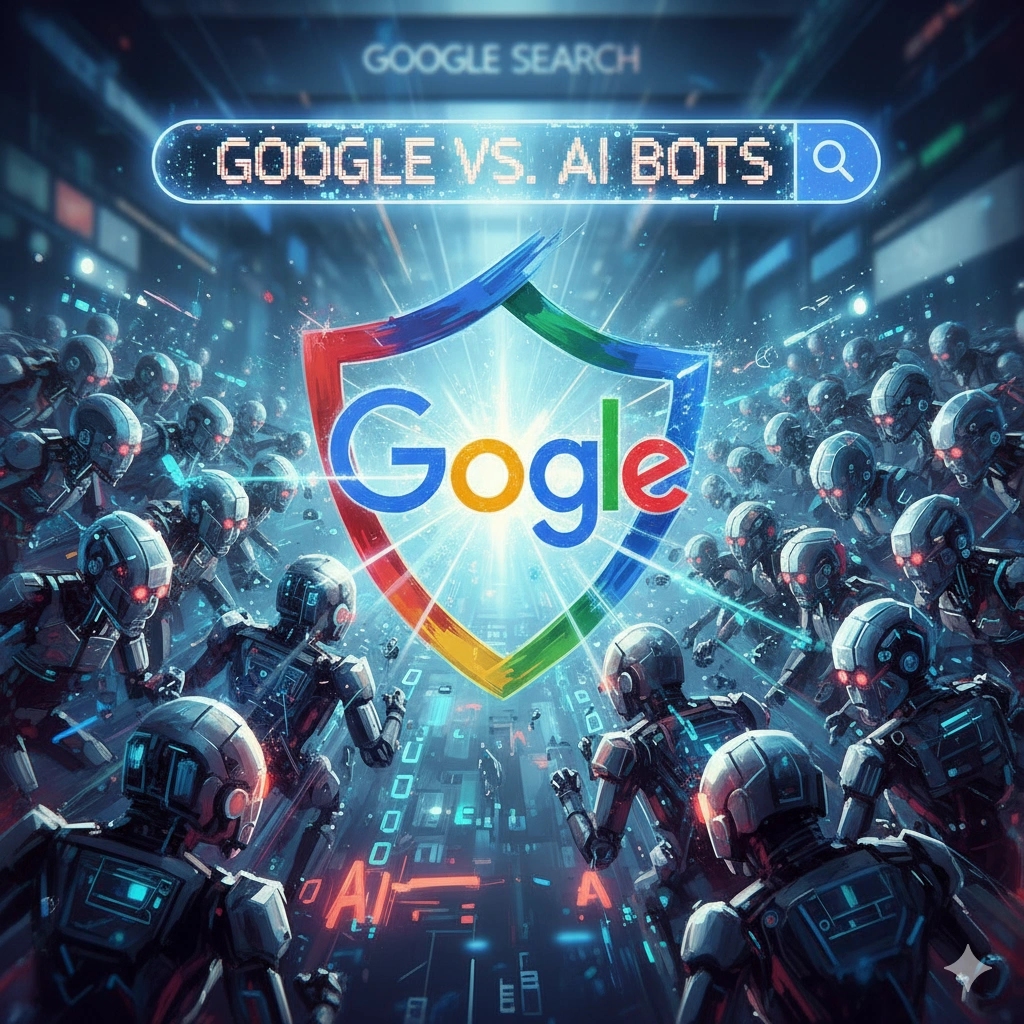When it comes to driving traffic, Google still wears the crown, but the battle between publishers and AI bots is heating up.
According toTollBit’s State of the Bots Q2 2025 report, Google sends publishers 831 times more visitors than AI systems.
That’s huge. Yet behind the scenes, AI bots are scraping websites at record levels, driving up costs for publishers, and delivering almost zero meaningful traffic in return.
This raises an important question: are we moving toward a web dominated by bots rather than humans?
The Key Update: Google Still Dominates, AI Referrals Barely Exist
Let’s get straight to it. In Q2 2025, Google accounted for 84.1% of all external traffic referrals to publisher sites.
Meanwhile, AI systems like chatbots and generative AI tools contributed just 0.102%. For every visitor that AI apps sent, Google delivered 831
The click-through rates from AI-generated answers are even weaker. According to the report, it takes around 135 AI scrapes just to generate one human visit.
Compare that with organic search, where users click through at far higher rates, and the gap becomes obvious.
The numbers don’t lie. Google may not have the monopoly it once had (down from 90%+ of referrals in 2024), but it’s still the go-to source for website traffic
Why This Matters: The Rise of Bots, Decline of Humans
While AI referrals remain low, AI traffic itself is skyrocketing. The report shows that:
- Human visitors to publisher sites fell 9.4% from Q1 to Q2 2025.
- AI traffic grew so quickly that by Q2, 1 in 50 visitors was a bot, up from 1 in 200 just a few months earlier.
- AI bot activity has now surpassed Bingbot, making it the second-largest crawler after Googlebot.
- Human visitors to publisher sites fell 9.4% from Q1 to Q2 2025.
In other words, bots are crawling more, but people are clicking less. This shift in traffic could disrupt the entire business model of the open web.
Publishers rely on clicks for ad revenue and conversions. If AI keeps scraping without sending visitors back, the web as we know it may face serious challenges.
Expert POV: What This Means for Businesses
From an SEO and digital service marketing perspective, this news is a wake-up call. Here’s why:
1. Content Monetization at Risk
Businesses that rely heavily on organic search traffic could see fewer human clicks if AI tools continue answering queries directly. Imagine spending money on content creation, only to have bots scrape it and serve the answers without credit.
2. Server Costs Will Climb
More bots crawling means more server strain. Publishers and businesses are paying the price, literally. Traffic from humans generates ROI. Traffic from bots just generates bills.
3. Geographic Differences Matter
Not all regions are hit equally. The report found that APAC sites received 3x more AI requests than U.S. sites, while European sites saw fewer scrapes. This means global businesses should start tracking bot activity by region and preparing accordingly.
4. Industries Affected Differently
Certain niches are feeling the brunt. Parenting content saw a 333% spike in AI requests, while deals and shopping content jumped by 111%. If your business is in one of these verticals, your site may already be on AI’s radar.
How Publishers Are Fighting Back
It’s not all doom and gloom. Publishers are pushing back against the rise of bots:
- Blocking AI bots surged 336% year over year.
- TollBit’s Bot Paywall hits jumped360% between Q1 and Q2.
- Yet, some bots are still ignoring the rules. Around 13.26% of AI requests ignored robots.txt, compared to just 3.3% last year.
- Blocking AI bots surged 336% year over year.
This “bot war” is only going to intensify. Some AI systems are getting better.
Anthropic’s Claude reduced error rates after live web access, but others are still sloppy.
OpenAI, for instance, saw its 404 errors spike from 0.3% to 3.7%due to hallucinated URLs.
If publishers and businesses don’t get ahead of this now, they could face higher costs and weaker returns moving forward.
Why You Should Care
At its core, this is about visibility and ROI. If you’re investing in digital service marketing, you want to make sure your content reaches humans who convert, not bots that just scrape.
The shift in traffic patterns means businesses need to start thinking differently:
- Monitor your referral traffic – Is most of it still coming from Google, or is AI starting to show up in your analytics?
- Track server activity – Rising server costs may mean bots are over-crawling your site.
- Plan for multi-channel visibility – Relying only on organic search isn’t enough. Diversify with email marketing, paid campaigns, and social to offset any lost traffic.
Final Thoughts
The big takeaway? Google is still the undisputed traffic king, but AI bots are becoming an unavoidable force. They scrape more, click less, and cost more. If left unchecked, this could fundamentally change how the internet works and not necessarily for the better.
Publishers and businesses must adapt now, or risk losing out in the long term.
Need Help Navigating These Changes?
At Tech Support Plus, we don’t just report the news; we help you act on it. Whether you’re looking to protect your content from over-scraping, strengthen your SEO strategy, or make sure your digital service investments pay off, we’ve got you covered.
Contact Tech Support Plus today for a consultation. Let’s make sure your business stays visible and profitable in a world where bots are taking over.




